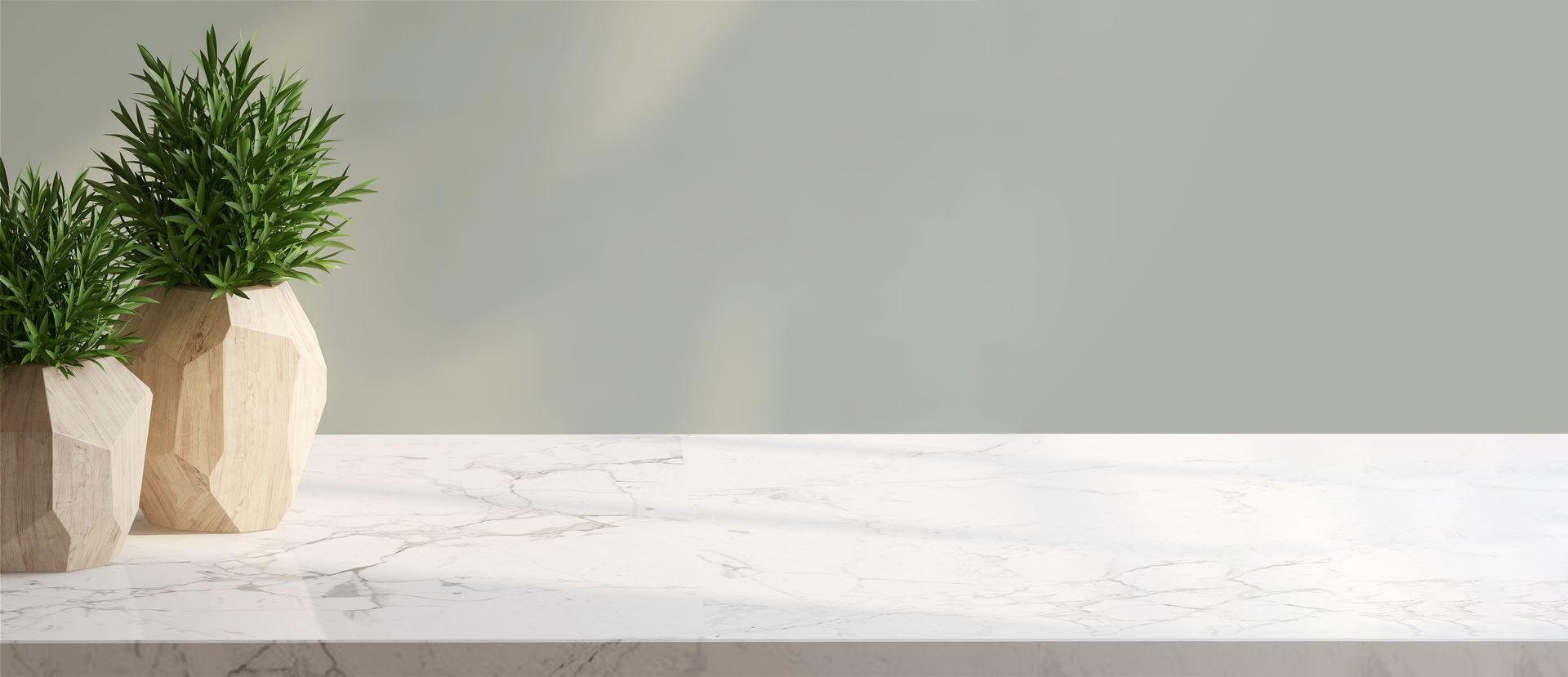When it comes to natural stone, homeowners and designers have many options, each with a unique aesthetic and characteristics. Among the most popular choices are granite, marble, and limestone. In this post, we'll delve into the differences in maintenance, durability, and appearance of these three stones, helping you make an informed decision for your next project.
Granite: The Durable All-Rounder
- Appearance: Granite is known for its flecked and grainy appearance, with a wide range of colors and patterns. It often features small to large grains of various colored minerals, making each piece unique.
- Durability: Granite is one of the hardest natural stones, making it resistant to scratches and heat. This durability makes it ideal for high-traffic areas like kitchen countertops.
- Maintenance: It's relatively low maintenance. Sealing is recommended at installation and periodically after that, depending on usage. Day-to-day cleaning requires just a mild soap and water.
Marble: Classic Elegance
- Appearance: Marble is famed for its veining and soft, swirling patterns. It exudes a classic and luxurious look, often found in shades of white and gray, but other colors are available.
- Durability: Marble is softer and more porous than granite, making it more susceptible to staining and scratching. It's often chosen for its aesthetic appeal rather than unmatched durability.
- Maintenance: Regular sealing is more crucial with marble to prevent stains. Acidic substances like lemon juice and vinegar can etch the surface, so spills should be cleaned immediately. For daily cleaning, use a soft cloth and pH-neutral cleaner.
Limestone: Natural and Versatile
- Appearance: Limestone has a natural, earthy appeal, typically featuring soft tones of beige, tan, and light grey. It often contains fossilized remains and natural markings, giving it a unique character.
- Durability: It is softer and more porous than granite, similar to marble, and can easily scratch and stain. It's best suited for low-traffic areas or where a weathered look is desired.
- Maintenance: Like marble, limestone requires regular sealing to protect against stains. Acidic cleaners and spills should be avoided to prevent surface damage. For cleaning, use gentle, pH-neutral products.
Making the Right Choice
- Consider Usage: If you need a workhorse for your kitchen, granite might be your best bet. Marble could be ideal for a luxurious touch in a bathroom or decorative feature. Limestone works well for accent areas where a natural, earthy look is desired.
- Think Long-Term: Consider how much time and resources you will invest in maintenance. Granite offers ease, whereas marble and limestone need a bit more care.
- Aesthetic Preferences: Each stone brings its unique beauty. Choose one that complements your space and matches your style.
- Budget Considerations: Generally, granite is more cost-effective than marble, with limestone often falling in between. However, prices can vary based on the stone's rarity and pattern.
In Conclusion
Granite, marble, and limestone each offer something unique regarding appearance and functionality. By understanding their differences in maintenance and durability, you can select a natural stone that not only enhances the beauty of your space but also fits your lifestyle and budget. Remember, no matter your choice, proper care and cleaning are vital to preserving the beauty and longevity of your natural stone investment.


